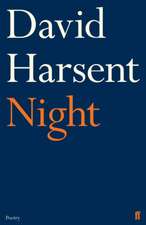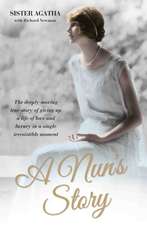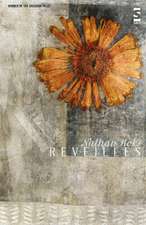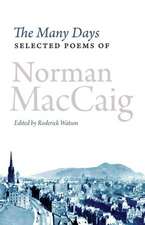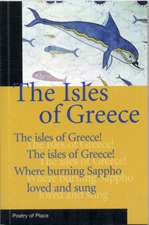All the Wasted Beauty of the World: Poems
Autor Richard Newmanen Limba Engleză Paperback – 14 oct 2014
PRAISE FOR ALL THE WASTED BEAUTY OF THE WORLD:
Richard Newman's All the Wasted Beauty of the World is masterful and magnetic, from the "galaxy of gnats" hovering in the St. Louis twilight to the way a backwoods junkyard "gnaws on a pile of old Ford bones." He sees a group of bored high school kids with "nothing to lose/ but stupid summer jobs and innocence," and captures with perfect acuity how "September rain in streetlight/ silvers the cypress needles, scatters new dimes/ among the nuisance alley mulberry trees." Newman's poems, with their formal, lapidary precision, their indelible portraits of life in the cheap bars, back alleys, and rough-hewn edges of the Midwest, surprise a hunger in us for a language larger, wilder, and unabashedly loftier than daily speech.-George Bilgere, author of Imperial
The poems in Richard Newman's remarkable third collection, All the Wasted Beauty of the World, are heady explorers. They roam from Lost Man Pass to Benton Park, from downtown St. Louis to Southern Indiana, all the while balancing gorgeous musicality with lyric originality. In the midst of the wandering, there is longing in these poems-for place, for order, for morning. There is urgency, too, and beauty, wasted and otherwise, in places we don't always expect it. Newman is a bold and masterful formalist in a free-verse world, and he uses sonnets, aubades, villanelles, and odes to reconcile the geographies of the interior and exterior. Again and again, this collection makes us recalibrate our true north and forces us to reconsider the world for all of the unpredictable places where we can find beauty.-Adrian Matejka, author of The Big Smoke
Newman uses the power of recollection and imagery to craft odes, sonnets, villanelles, ballads, and free verse with titles like "Four Kids Pissing off the Overpass after a Cardinals Game." Each poem calls our attention to a rough-and-tumble, everyday America we often drive past but overlook. All the Wasted Beauty of the World returns us to the real and, consequently, the new by putting on the brakes and asking us to look, if only briefly, beyond our rear-views.-Dorianne Laux, author of The Book of Men
ABOUT THE AUTHOR:
Richard Newman is the author of the poetry collections Domestic Fugues (Steel Toe Books, 2009) and Borrowed Towns (Word Press, 2005), as well as several poetry chapbooks. His poems have appeared in Best American Poetry, Boulevard, Crab Orchard Review, Meas
Preț: 101.86 lei
Nou
Puncte Express: 153
Preț estimativ în valută:
19.49€ • 20.35$ • 16.09£
19.49€ • 20.35$ • 16.09£
Carte disponibilă
Livrare economică 25 martie-08 aprilie
Preluare comenzi: 021 569.72.76
Specificații
ISBN-13: 9781927409312
ISBN-10: 1927409314
Pagini: 102
Dimensiuni: 152 x 229 x 6 mm
Greutate: 0.16 kg
Editura: Able Muse Press
ISBN-10: 1927409314
Pagini: 102
Dimensiuni: 152 x 229 x 6 mm
Greutate: 0.16 kg
Editura: Able Muse Press
Notă biografică
This book looks at the life and work of Saint Benedict through the history of sixth-century Italy, throwing fresh light on Benedict's Rule and Pope Gregory the Great's Life of Benedict (his second Dialogue). Commentaries on the Rule concentrate-quite naturally-on Benedict's spirituality but rarely take into account modern historical scholarship on the period.Though often thought of as a medieval figure, Saint Benedict was, in fact, a Roman. During the first half of his adult life he lived in an Italy that was peaceful and the Roman social and political order essentially intact, even though under the ruled of a Gothic king. Benedict's community inherited much from this late-Roman cultural background and from the eclectic intellectual atmosphere of the time. During the last years of his life the Roman order finally collapsed-thanks to Justinian's invasion of Italy, an epidemic of plague and exceptionally poor harvests ¿ posing new challenges for the community at Monte Cassino.During Benedict's lifetime the Church was torn by disputed papal elections, a serious theological dispute between Rome and the eastern provinces and tensions between central administration and the initiatives of local congregations and Christian laymen such as Benedict himself. These developments affected Benedict and his community in various ways, some very directly.By approaching Benedict in this way, a more fully rounded picture of the saint emerges-a man who was practical as well as holy. This book will be invaluable for all those concerned with the Benedictine tradition-monastic communities and their oblates particularly, but also to anyone interested Western Monasticism and the early history of the Church.





